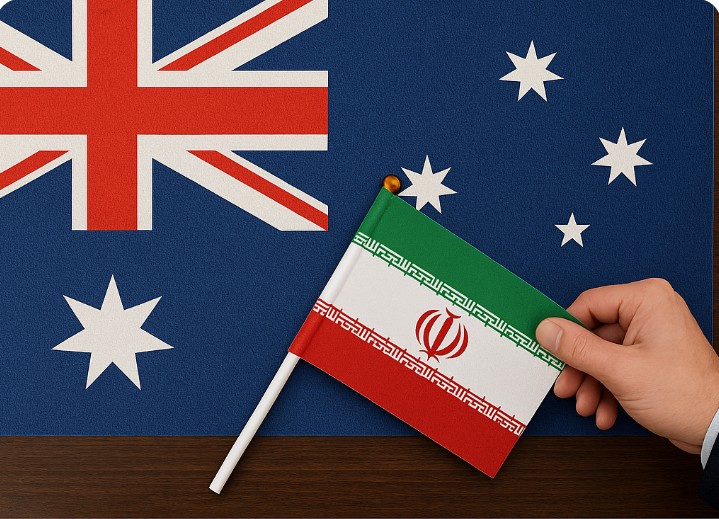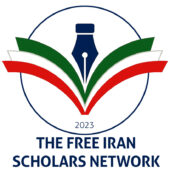Dr. Sofey Saidi (PhD International Relations), Geneva School of Diplomacy & International Relations

Introduction The expulsion of Iran’s ambassador from Australia represents more than a bilateral dispute; it underscores the role of diplomatic expulsions as symbolic acts in international relations. Such actions signal disapproval, reaffirm international norms, and place pressure on states engaged in repression, violations of human rights, or destabilizing regional behavior (Butt, 2024). Australia’s decision resonates in a global context where democratic states are grappling with how to respond to Iran’s policies of suppression, nuclear ambitions, and transnational influence (Duncombe, 2019). This analysis situates the expulsion within the history of diplomatic sanctions, analyzing why it matters and why other nations should be compelled to follow suit
Australia–Iran Relations: A Historical Trajectory
Australia’s relationship with Iran has long been defined by tensions between trade interests and human rights concerns (Markovic, 2013). During the Iran hostage crisis (1979–1981), Canberra sided with the U.S. position at the International Court of Justice, pressing Iran to honor diplomatic immunity (Rafat, 1980; Grzybowski, 1981). Subsequent decades saw fluctuations, including cooperation on refugee flows and disputes over Iran’s nuclear program (Scrivener, 2010). The ambassador’s expulsion reflects this trajectory: moments of confrontation where norms override pragmatism (Mansouri & Wood, 2006).
Diplomatic Expulsion in International Relations
Expulsions of ambassadors are rare but potent instruments of diplomacy. Such acts are high-cost, high-signal measures that communicate political red lines without resorting to war (Lilienthal & Ahmad, 2020). They serve as moral and political statements against unacceptable conduct, from human rights violations to breaches of international law (Butt, 2024). The expulsion of Iranian diplomats by the U.S. in 1980, following the embassy hostage crisis, set a precedent for using expulsions as a non-military punitive tool (Rafat, 1980). Australia’s recent expulsion fits this tradition by highlighting human rights as central to international legitimacy (Fernandes, 2022).
Historical Case Studies
Case 1: Iran and the U.S. Embassy Crisis (1979–1981)
The 1979 hostage crisis marked a turning point in modern diplomacy. The U.S. expelled Iranian diplomats, severed ties, and sought international condemnation through the UN and ICJ (Grzybowski, 1981). This set the tone for how nations might collectively pressure rogue states (Rafat, 1980).
Case 2: Apartheid South Africa (1980s)
Multiple Western states expelled South African diplomats in protest against apartheid, signaling global rejection of systemic racial oppression. The expulsions, alongside economic sanctions, demonstrated how diplomatic measures can reinforce broader moral campaigns (Butt, 2024).
Case 3: Russia and the Skripal Poisoning (2018)
The coordinated expulsion of over 150 Russian diplomats across 25 countries after the Skripal poisoning showed the power of collective action in isolating a state. This demonstrated how expulsions could serve as a united front against covert aggression (Fernandes, 2022).
Case 4: Other Examples (Myanmar, Cuba, Venezuela)
Expulsions have also been used as symbolic delegitimization of authoritarian regimes in contexts such as Myanmar after the 2021 coup. These acts highlight how states can express disapproval without resorting to direct confrontation (Butt, 2024).
Why Other Countries Should Follow Australia
There are several reasons why other states should follow Australia’s lead:
- Norm Reinforcement: Collective expulsions strengthen international law by penalizing violations of human rights and diplomatic norms (Lilienthal & Ahmad, 2020).
- Moral Pressure: Expulsions elevate public awareness and delegitimize authoritarian regimes (Duncombe, 2019).
- Strategic Containment: Removing Iranian ambassadors reduces Tehran’s capacity for intelligence gathering and influence operations abroad (Scrivener, 2010).
- Global Solidarity: Coordinated actions amplify the impact, demonstrating unity among democracies and preventing Iran from exploiting bilateral divisions (Fernandes, 2022).
Theoretical Context in International Relations
From a realist perspective, expulsions are symbolic but secondary to hard power (Butt, 2024). Yet from a constructivist lens, they shape international norms and identity politics, redefining which behaviors are acceptable in the global order (Duncombe, 2019). Liberal institutionalists stress the role of collective action: isolated expulsions have limited impact, but coordinated moves—as in NATO and EU responses to Russia—generate systemic pressure (Fernandes, 2022).
Policy Recommendations
Based on historical lessons and theoretical insights, the following recommendations are offered:
- Coordinated EU, U.S., and Pacific alliances approach to expelling Iranian diplomats.
- Use of expulsions alongside targeted sanctions for maximum pressure.
- Greater emphasis on linking expulsions to international human rights monitoring (Butt, 2024).
Conclusion
Australia’s expulsion of Iran’s ambassador is a landmark moment that reflects both historical precedent and theoretical significance. It highlights the role of diplomatic sanctions as tools of normative enforcement in the absence of military intervention (Grzybowski, 1981). For other countries, following suit is not merely a matter of bilateral dispute but of collective responsibility to uphold international law, human rights, and the stability of global diplomatic norms (Fernandes, 2022). If coordinated, such expulsions could mirror past successes against apartheid South Africa and contemporary measures against Russia, amplifying pressure on Iran’s regime while affirming the integrity of international diplomacy (Duncombe, 2019).
References
Butt, J. S. (2024). The abuse of diplomatic immunity: Examining cases and implications for international relations. Acta Universitatis Danubius. Juridica, 20(1), 45–67.
Duncombe, C. (2019). Representation, recognition and respect in world politics: The case of Iran-US relations. Routledge.
Fernandes, C. (2022). Subimperial power: Australia in the international arena. Routledge.
Grzybowski, K. (1981). The regime of diplomacy and the Tehran hostages. International & Comparative Law Quarterly, 30(2), 264–276.
Lilienthal, G., & Ahmad, N. (2020). Inviolability of diplomatic archives: A comparative analysis. Commonwealth Law Bulletin, 46(2), 257–276.
Mansouri, F., & Wood, S. Y. P. (2006). Exploring the Australia–Middle East connection. Deakin University.
Markovic, N. (2013). It’s complicated: A timeline of Australia–Iran relations in historical perspective. Parliament of Australia.
Rafat, A. (1980). The Iran hostage crisis and the International Court of Justice. Denver Journal of International Law & Policy, 10(1), 425–448.
Scrivener, R. J. (2010). Australia’s relations with Iran and the Australia-US alliance, 1979–2005 (Doctoral dissertation). Australian National University.
